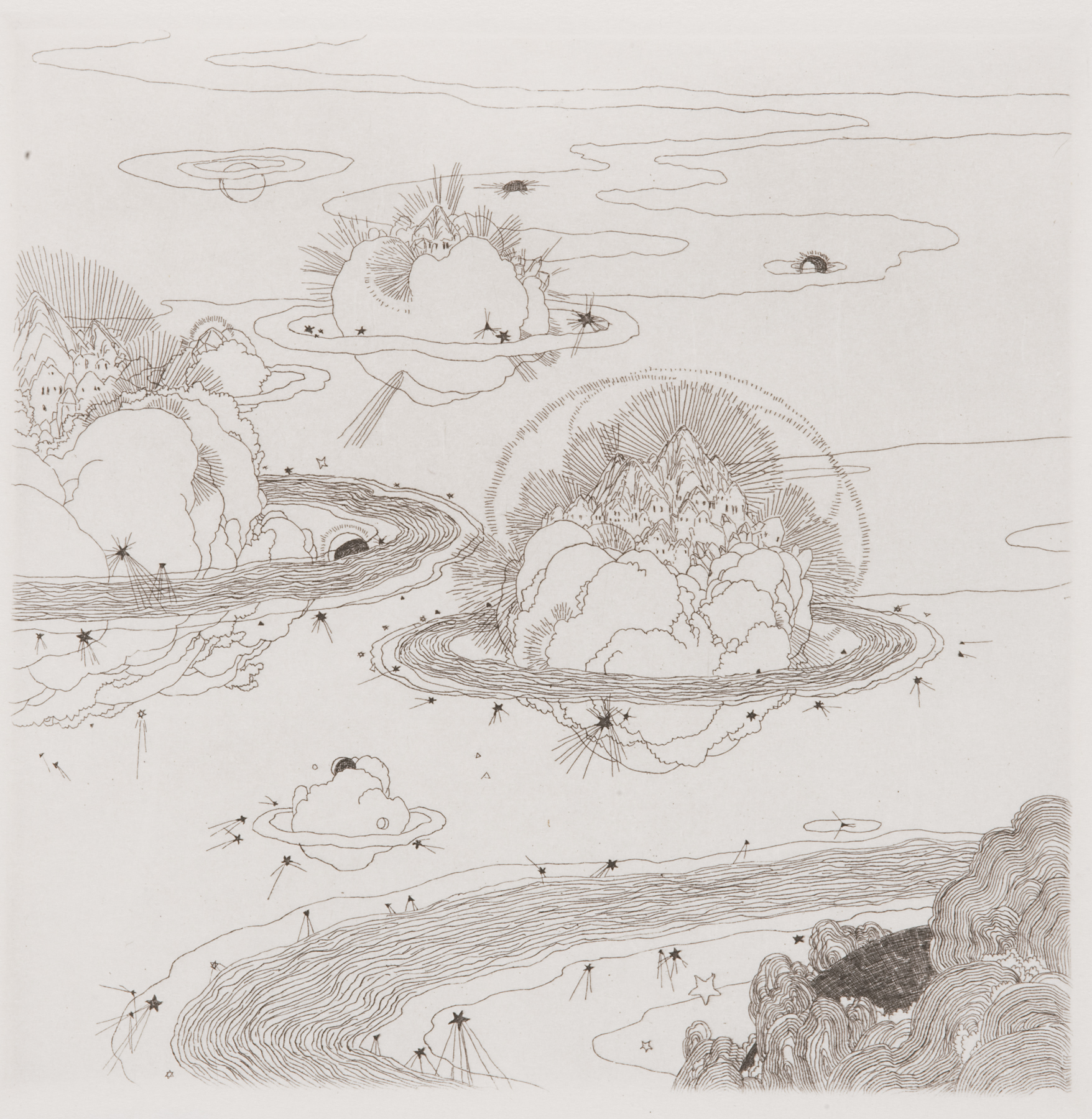untitled, Wenzel Hablik
Artwork Overview
Wenzel Hablik, artist
1881–1934
untitled,
1909
Portfolio/Series title: Schaffende Kräfte (Creative Forces)
Where object was made: (present-day Czech Republic)
Material/technique: etching
Dimensions:
Image Dimensions Height/Width (Height x Width): 195 x 194 mm
Image Dimensions Height/Width (Height x Width): 7 11/16 x 7 5/8 in
Sheet/Paper Dimensions (Height x Width): 401 x 301 mm
Sheet/Paper Dimensions (Height x Width): 15 13/16 x 11 7/8 in
Plate Mark/Block Dimensions (Height x Width): 199 x 199 mm
Plate Mark/Block Dimensions (Height x Width): 7 13/16 x 7 13/16 in
Mat Dimensions (Height x Width): 19 x 14 in
Image Dimensions Height/Width (Height x Width): 195 x 194 mm
Image Dimensions Height/Width (Height x Width): 7 11/16 x 7 5/8 in
Sheet/Paper Dimensions (Height x Width): 401 x 301 mm
Sheet/Paper Dimensions (Height x Width): 15 13/16 x 11 7/8 in
Plate Mark/Block Dimensions (Height x Width): 199 x 199 mm
Plate Mark/Block Dimensions (Height x Width): 7 13/16 x 7 13/16 in
Mat Dimensions (Height x Width): 19 x 14 in
Credit line: Anonymous gift
Accession number: 2010.0005
Not on display
If you wish to reproduce this image, please submit an image request



